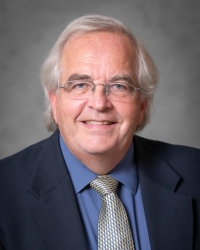2013 Academy President Cecil Bykerk’s Farewell Address, Nov. 4, 2013
“I have initiated an extensive health care cost initiative that will soon bear fruit with the forthcoming publication of a series of papers addressing health costs, something that — for whatever your view of it is — the Affordable Care Act health reform has yet to show that it can address in a meaningful way.”
 Today’s awards are a reflection of the high caliber of talented and experienced actuaries who volunteer at the Academy, and of the value that the Academy places on their service to the public and to the profession.
Today’s awards are a reflection of the high caliber of talented and experienced actuaries who volunteer at the Academy, and of the value that the Academy places on their service to the public and to the profession.Of course, this is a shared value across our profession, and it is one that is foundational in making the actuarial profession great.
In this time of critical challenges to our profession and to the nation, I believe we need to be fully engaged wherever and whenever necessary on the public policy concerns that affect our practice as actuaries, and more importantly on those issues where we can and should make a contribution.
To that end, I have pressed for meaningful engagement of Academy leaders with public officials at the federal and state levels, including robust dialogue with the U.S. Comptroller General, the PBGC Director, NAIC’s new CEO, Senator Ben Nelson, members of Congress, and others.
I have initiated an extensive health care cost initiative that will soon bear fruit with the forthcoming publication of a series of papers addressing health costs, something that — for whatever your view of it is — the Affordable Care Act health reform has yet to show that it can address in a meaningful way. This initiative was launched during the Academy’s summer summit when I was president-elect. I am happy to point out the Academy’s other initiative during that summit, Lifetime Income, was successfully launched earlier this summer, and that our incoming President, Tom Terry, is fully engaged in moving forward with that effort.
As I am pretty sure I am speaking to mostly property and casualty actuaries in this hall today, I am sure you can appreciate the importance of appointed actuary rules and other state insurance commissioner authorities governing qualification and oversight of actuarial work product. I have spent considerable time this past year traveling to NAIC meetings as well as “phoning it in,” as they say.
“Actuaries live and work within larger communities — neighborhoods, cities, states and their country, and now, more than ever, internationally with our peers abroad. If our communities do not find solutions, we all suffer the consequences. If solutions are found, all benefit.”
When state regulators at the NAIC expressed concerns about the quality of work they have observed recently, we determined at the Academy that a robust, full-court-press was necessary to explore with regulators their concerns over the profession’s qualification and discipline processes, and respond to their questions. And, while these discussions continue, it has once again illustrated the need for the Academy’s engagement with regulators, since while the discussions have been pointed, frank, and sometimes uncomfortable, it has also been an opportunity for the Academy to educate regulators on some of the lesser-known aspects of our professionalism work. It has also been an opportunity for the Academy to learn where it might direct its focus to raise the level of practice.
The past year has yielded considerable opportunity for the Academy to make the profession’s voice heard on issues such as implementation of the Affordable Care Act and principle-based reserving for life insurance, terrorism risk and flood insurance, federal regulation of insurance, risk-based capital standards, international standards of practice, and so on…..
I could spend the next several hours at this podium highlighting all of the Academy’s significant work over the past year; however, I am sure you would soon find other things to do so I will draw to a close, as my time as your president has now drawn to its conclusion.
As I prepared today’s remarks and to turn over the reins of leadership of the Academy, I gave considerable thought to what makes it possible for actuaries from different practice areas and diverse backgrounds to come together with a single purpose at the Academy. I believe an important part of the answer is that we know that the best solutions to the educational, financial, policy and other challenges our communities face cannot be found without being informed by an actuarial perspective, and that we can most strongly accomplish that work when we work together toward common cause. This is indeed the reason the Academy came to be almost 50 years ago, and why it is respected for its independent, objective work today.
Actuaries live and work within larger communities — neighborhoods, cities, states and their country, and now, more than ever, internationally with our peers abroad. If our communities do not find solutions, we all suffer the consequences. If solutions are found, all benefit. The actuarial perspective does not guarantee success, but it makes it more likely.
I am proud to have led the Academy, with its hundreds of dedicated volunteers and committed staff members, in the noble pursuit of responding to our communities’ needs.
Finally, I would like to humbly acknowledge that my time and focus spent working this past year as your president was made possible only due to my patient and supportive wife, Loree, who is my personal hero.
Thank you again for the opportunity to serve you.
Share







